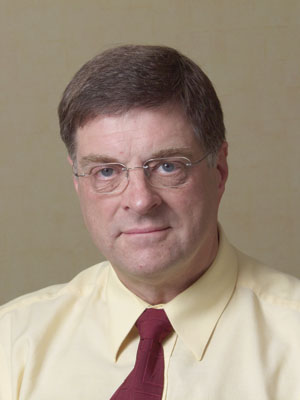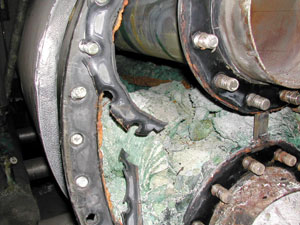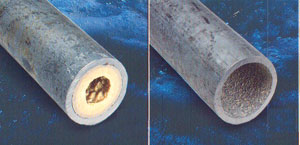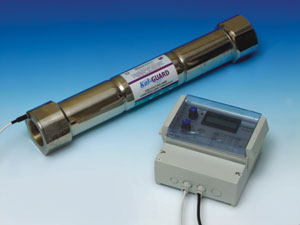The build up of scale deposits and corrosion are both common and costly problems in many industrial processes and commercial buildings using natural water supplies. The largest issue comes from limescale as two-thirds of the population lives and works in areas where the water is hard. For many years, the preferred choice has been the introduction of water conditioners to the system in an attempt to reduce the problem. However, according to Mike Potter, product development manager of Watermatic, there’s
a new generation of processes and systems which treat and reverse limescale – and there are significant cost savings to be had by using them

FOR as long as people have been heating hard water, limescale has been a problem. In some cases it is a nuisance, such as when it forms a coating of scale on cooking implements. But in appliances, heating systems and industrial processes which use hot water or steam, limescale can be a very costly burden - the cost of limescale to UK industry has been estimated at over £1bn per annum.
Hardly surprising therefore, that the human brain has long been searching for a solution to this problem. The first generation of chemical inhibitors dates back to as early as 1821 when it was found that potato starch would reduce scale formation. Since then many other chemicals and effects have been found to inhibit scale and one of the most effective is zinc, even in tiny quantities. The higher the level of zinc ions in the water, then the greater the effect on scale formation, so much so that it will even remove existing scale deposits.

Limescale build-up
Despite this, the most widely and commonly used approach to controlling limescale has been by introducing water conditioners to water systems. This type of approach has been around for some time, but while traditional water conditioners do serve to tackle the problem to a degree, there are a number of variables that in a sense undermine their efficacy. For example, electrostatic-effect water conditioners lose their effect on the water in a system over time, so the effectiveness of these is compromised and their managing powers over limescale consequently diminish.
Also, the distance the water in the system has to travel, and the type of plumbing and water system in place, can impact on the efficiency of the conditioner - too much turbulence in the pipework can again compromise effectiveness.
The most effective way of dosing the water with zinc is through electrolysis using a zinc anode and copper cathode in the water. There is a high electrolytical potential between these two metals which causes zinc ions to be released into the water in minute quantities.
This type of treatment has been tested, and proven independently by specialists at Cranfield University. The tests included assessing the amount of scale formation using a temperature controlled heating element with a removable sleeve that enabled examination of the type and build up of limescale on the sleeve. These tests in the laboratory were confirmed by field trials in a range of commercial and industrial applications which show, as a direct consequence, an improvement in energy usage and a reduction in maintenance and capital expenditure - plus a fast payback on the investment of less than 12 months.

Pipe (left) showing the limescale build-up and (right) after installation of Kal-Guard
The unit tested by Cranfield is the Kal-Guard Plus. Cranfield's report stated the unit reduced the amount of scale on the heater sheath by 80% when compared with the control. The unit also reduced the level of scale formed in the bulk and when comparing the total amount of scale formed (combined heater and bulk), it reduced scale formation by 74%.
These independent tests at Cranfield, together with results delivered out in the field for organisations including various sites within the Whitbread group, Imperial Tobacco's Nottingham plant, and several care homes run by Somerset County Council, prove the technology and the Kal-Guard Plus unit deliver tangible energy, and cost savings. And these can be seen in just a few months, not years, following installation, and can represent savings of as much as 15% of all gas used for all hot water heating needs.

The Kal-Guard Plus unit
This scientific technology represents the next step in the treatment and prevention of limescale in commercial environments. At a time when there is increasing pressure to reduce environmental impact and minimise total life costs, they offer clear benefits. Hot water systems last longer and remain efficient, energy consumption and maintenance requirements are minimal and there is no need for toxic or corrosive chemicals.'
Salamander (0121 378 1188